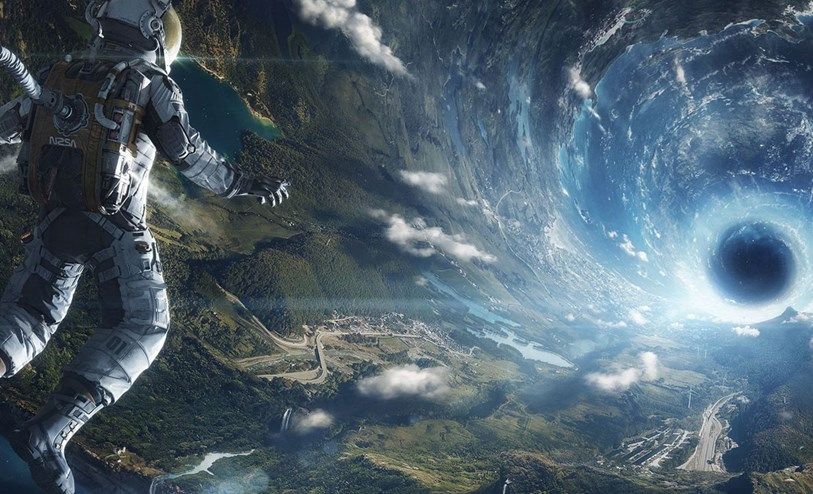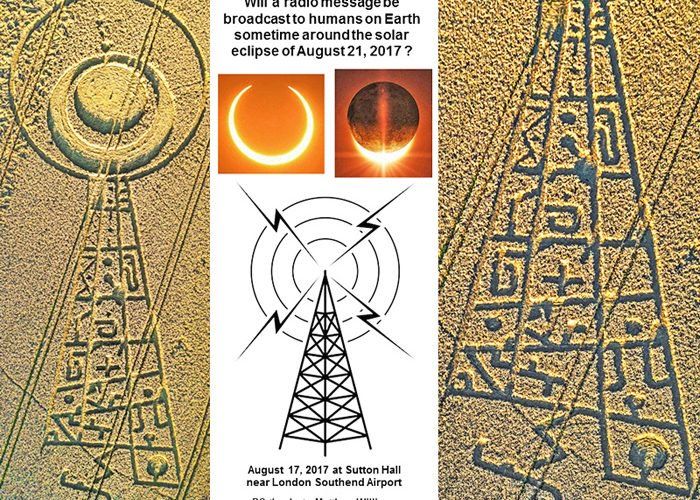NASA Scientist Reveals Potential Black Hole Home for ET
Article by Sean Martin March 14, 2020 (express.co.uk)
• NASA astrophysicist Jeremy Schnittman saw the 2014 movie ‘Interstellar’ in which it’s star, Matthew McConaughey, goes in search of a habitable planet for humans to live on as Earth is dying. The film’s scientists discover planets orbiting a black hole which could sustain life. Schnittman wanted to test the real-life feasibility of whether energy given off by a black hole could be enough to support life.
• Schnittman wrote a paper on it, and it was published in the journal arXiv. In it he says that “the Sun provides almost all the energy necessary for life on Earth to survive. Without it’s constant heat flux, the oceans would likely freeze over in a matter of days.” Likewise, black holes can provide their own energy source, in the form of radiation from hot, accreting gasses. The friction generated by ‘accretion discs’, ie: materials or objects orbiting a black hole that are constantly pushed and shoved by the extreme gravitational force, could produce a tremendous amount of energy. This could replace the star (Sun) allowing life to exist. (see 37 second video below of flaring black hole)
• Schnittman notes that the radiation energy coming from a black hole would be potentially “lethal” to any life. “All known life forms require an energy gradient in order to survive, so an all-pervasive black-body radiation background would probably not be very conducive to complex life.”
• In reality, there are factors that would prevent the Earth from turning to a radiant black hole for its survival if our Sun was dying. First, the Sun is too small to become a black hole. It would need to be about 20 times larger. It is predicted that the Sun will use up its supply of hydrogen in about 5 billion years, when it will condense into a white dwarf. Second, as the nearest black hole is located 6,523 light-years away, or 6,523 x 5.88 trillion miles, even if we could find a habitable planet nearby, this is too far for humans to reach (with our current technology that is).

The amount of energy given off by a black hole could be enough to support life, expanding the possibilities of  where humans should search for extraterrestrials. NASA astrophysicist Jeremy Schnittman based his research on the hit Hollywood movie Interstellar, in which the main character, played by Matthew McConaughey, goes in search of a habitable planet for humans to live on as Earth is dying. In the 2014 movie, the scientists discovered planets orbiting a black hole which could sustain life. Mr Schnittman wanted to test the real-life feasibility of this.
where humans should search for extraterrestrials. NASA astrophysicist Jeremy Schnittman based his research on the hit Hollywood movie Interstellar, in which the main character, played by Matthew McConaughey, goes in search of a habitable planet for humans to live on as Earth is dying. In the 2014 movie, the scientists discovered planets orbiting a black hole which could sustain life. Mr Schnittman wanted to test the real-life feasibility of this.
The scientist said accretion discs, made up of materials and objects orbiting a black hole, could allow life to exist.
The friction generated by these discs as they are pushed and shoved by the extreme gravitational force is so large that it can produce a tremendous amount of energy, depending on the size of the black hole.
While the Sun gives Earth energy through light and heat, the radiation and energy from the accretion discs might prove just as valuable.
Mr Schnittman wrote in the paper published in the journal arXiv: “On the down side, the Sun provides almost all the energy necessary for life on Earth to survive. Without it’s constant heat flux, the oceans would likely freeze over in a matter of days.
“But we also know that many astrophysical black holes can provide their own energy source, in the form of radiation from hot, accreting gas.
“In fact, for most observable black holes, this accretion power outweighs anything attainable from nuclear fusion by many orders of magnitude.
37 second video depicting black hole flaring (UoS News Desk YouTube)
FAIR USE NOTICE: This page contains copyrighted material the use of which has not been specifically authorized by the copyright owner. ExoNews.org distributes this material for the purpose of news reporting, educational research, comment and criticism, constituting Fair Use under 17 U.S.C § 107. Please contact the Editor at ExoNews with any copyright issue.

